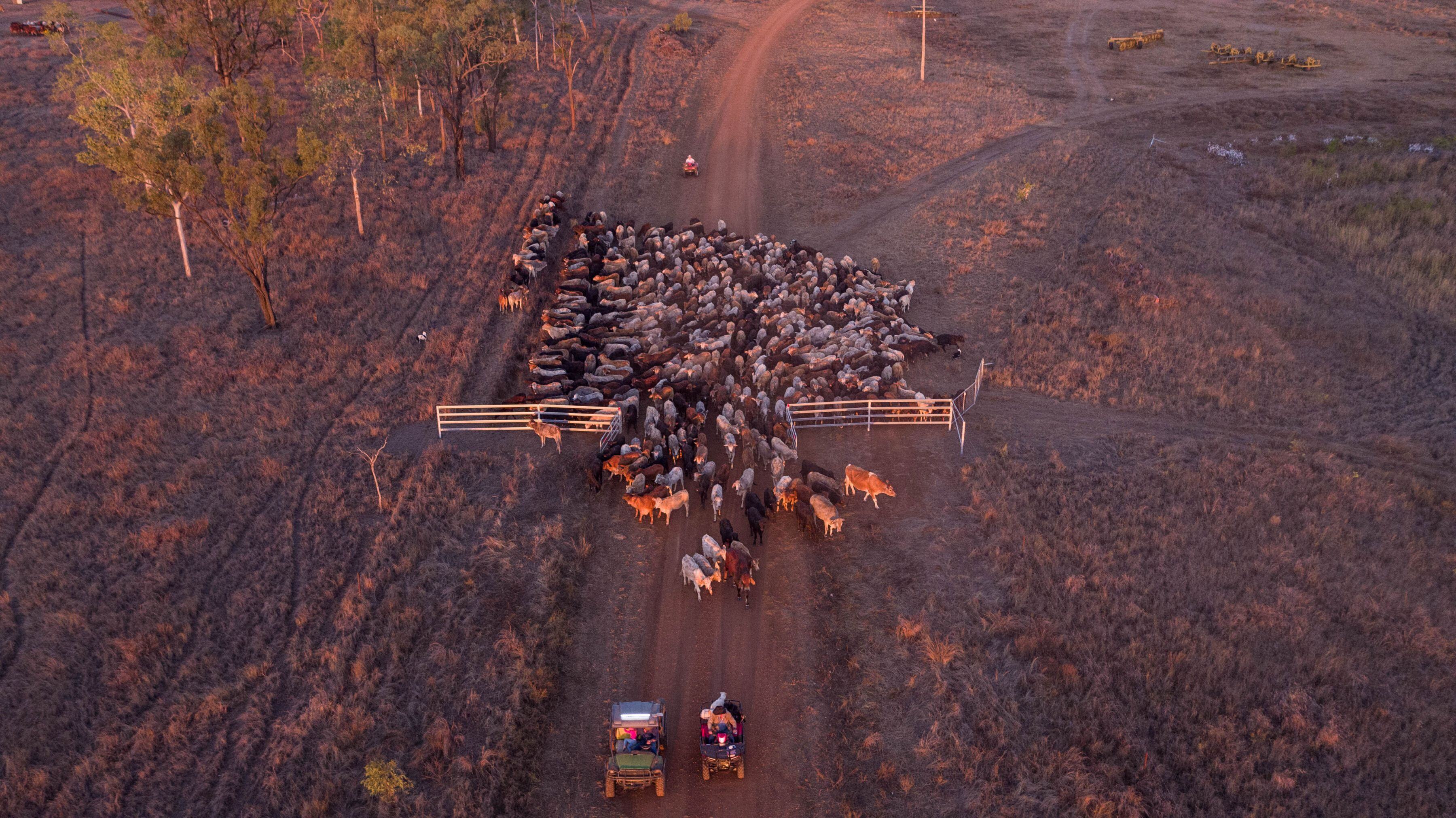The Australian Beef Market in 2025: An Absolute Cracker
In this column in July, the StoneX H2 2025 Australian Cattle & Beef Market Outlook’s bold calls were analysed and assessed for what the final 6...
3 min read
 Natasha Lobban
:
Feb 14, 2025
Natasha Lobban
:
Feb 14, 2025

Australia’s always been the land of drought and flooding rains, and this week has been the perfect example.
Heavy rains in Queensland have led to floods, while drought and bushfires rage in southern Australian, meanwhile the Pilbara is bracing for Severe Tropical Cyclone Zelia. Jane Bunn has also forecast snow in the Alps this weekend.
We take a look at how different regions are holding up to these extreme weather conditions and what this means for livestock markets, which historically are deeply guided by weather headwinds.
READ MORE: INDICATORS: NYCI bouncing back but sheep prices take nosedive
Queensland Rural Manging Director Troy Trevor, who operates out of Charters Towers, reported that his region has received 420mm of rain during the previous 10 to 12-day period.
On Thursday the sun was shining, and the last road, north of Charters Towers, had opened up.
“There’s crazy amounts of water and a lot of water moving around. All river systems are full and moving,” he said.
The region had escaped the damaging floods recorded in coastal areas, where there has been talk of up to 2.5m of rain in some places.
In fact, to the west, such as out near Hughenden, Cloncurry and Winton, which had been experiencing dry times, it was very welcome and beneficial.
“Everything is starting to move again with caution, but there’s a few cattle that still need to move,” he said.
There were no sales at Charters Towers this week, and there won’t be one next week either.
He expected the rain would open up opportunities for cattle in the sub-300kg category.
“For the under 300kgs I’m hoping there will be a bit of interest from western and central Queensland to feed these up and the coming weaners available around Easter time and beyond," he said.
In the west, AWN WA State Livestock Manager Dean Hubbard highlighted the impact “critically low” stock water was having on decision making for the state’s producers in the south.
“It’s forcing their hand in some regards," Mr Hubbard said.
Transportation of livestock from west to east, which was occurring at large volumes the same time last year, has also dried up.
“Our hooks prices are OK for anyone who has finished stock,” he said.
“It’s just that stock that’s out of condition – we have a few too many of those.”
He said processing wise demand looked as good as it had looked for a while.
“Anyone that wants to feed between now and April will probably get reasonably well rewarded for it.”
Jono Spence at Spence Dix at Keith, is hearing a lot about record dry weather.
Some people in the area are saying it’s the driest on record, comparing it to 1967, while others are saying it’s the driest recorded in their family’s 120-year history in the region.
Either way, experience from previous dry times have set them up to make the best out of a tough situation.
“It’s incredible to think that our lamb prices are 60% better than last year and cattle prices 30% better than last year,” Mr Spence said.
He credits the buoyant livestock market with support from the east, particularly the north east.
There are holes in the market though, like scanned in lamb ewes, which would usually be sold locally. The demand just isn’t there.
He said producers were doing an incredibly job of utilising lessons learned in 2006, and that frosted crops meant there was local hay supply as well.
“I think if a decent rain was to be had, a real solid break, our local store stock numbers and feeder steers would dry up and demand for breeding stock would increase,” he said.
MLA Manager – Market Information, Stephen Bignell, said there was now a clear premium in the south and discount in the north.
“In Roma, the Heavy Steer Indicator is currently trading at a 25¢/kg lwt discount to the Young Restocker. In this scenario, a trader relies on weight gain to return a trading profit," Mr Bignell said.
“In the southern markets, using Leongatha as an example, the Heavy Steer price is commanding a 76¢/kg premium to restocker prices."
This week the highest prices for heavy steers (finished animals bought by processors) were all recorded at saleyards in either Victoria or SA, namely: Leongatha (378¢/kg), Echuca (351¢/kg), Wodonga (346¢/kg), Shepparton (344¢/kg) and Mt Gambier (343¢/kg).
“A year ago, saleyards in the north of the country held three of the top five prices for heavy steers, including Warwick, Dalby and Casino,” Mr Bignell said.
“Over the same period, the throughput of heavy steers in the five Victorian/SA yards listed above (Leongatha/Packenham, Echuca, Wodonga, Shepparton and Mt Gambier) have fallen 47% due to dry conditions affecting the supply and quality of finished cattle.
“This climate-driven reduction in supply has increased prices.”
Mr Bignell said the closing price differential between the NYCI and Heavy Steer Indicator made trading steers generally attractive.
“It reflects that the market for restockers has softened as the northern herd rebuild plateaus and the south enters a destock,” he said.
“It could also indicate that buyers in the south expect supply to get lean as the year progresses, with dry conditions forecast to continue.
“For producers, the margins on trades may have improved as the premium paid for inbound animals has closed and producers can just focus on adding kilos of weight – rather than also having to recoup the young animals’ purchase costs.
“This is especially true for southern traders, with access to pasture they are currently able to boost returns through both weight gain and the price premium for heavy cattle. Those in the north are still only relying solely on weight gain.”
.jpg)
In this column in July, the StoneX H2 2025 Australian Cattle & Beef Market Outlook’s bold calls were analysed and assessed for what the final 6...
.png)
Each December we save the last article of the year for a bit of a crystal ball gaze, as we try to bring together market fundamentals and work out...
.png)
Australia’s wool market posted another strong performance this week, with all micron categories attracting solid support across the three selling...